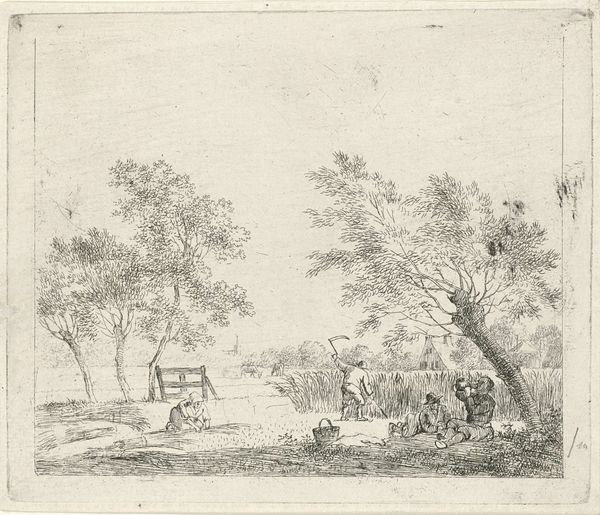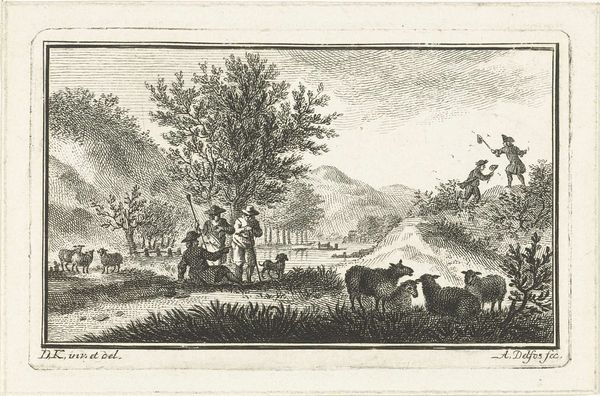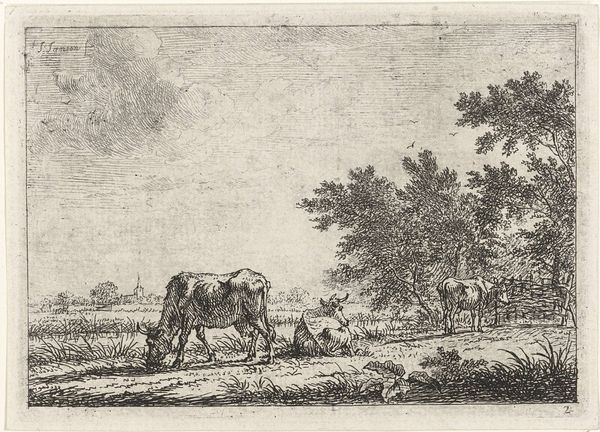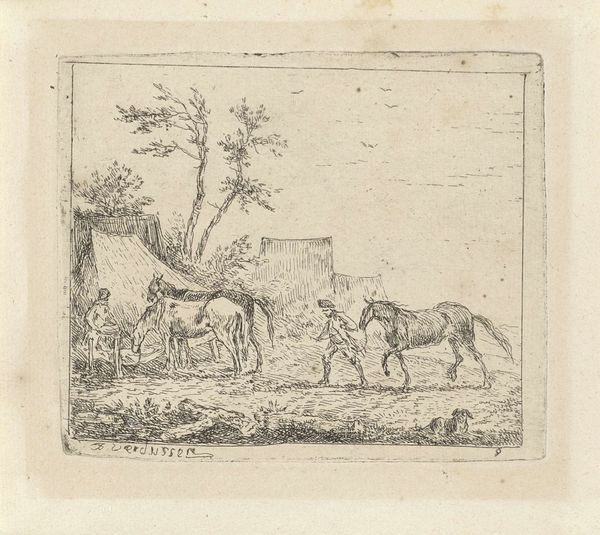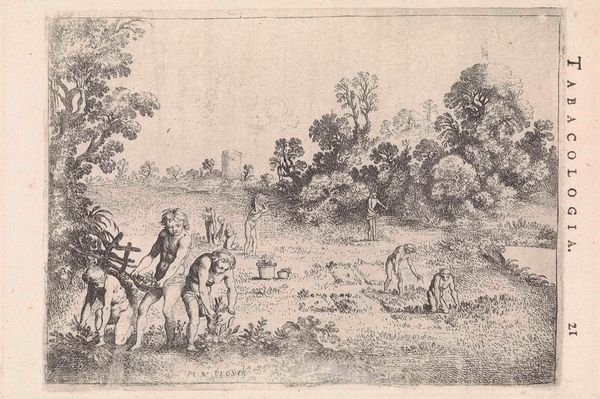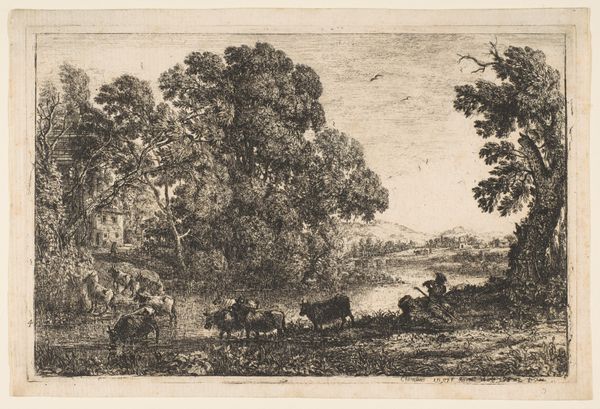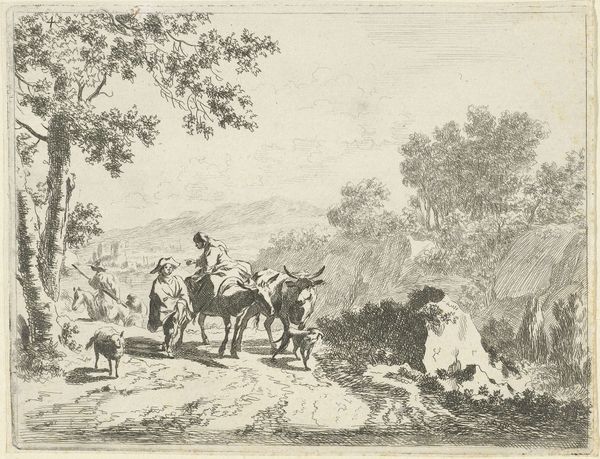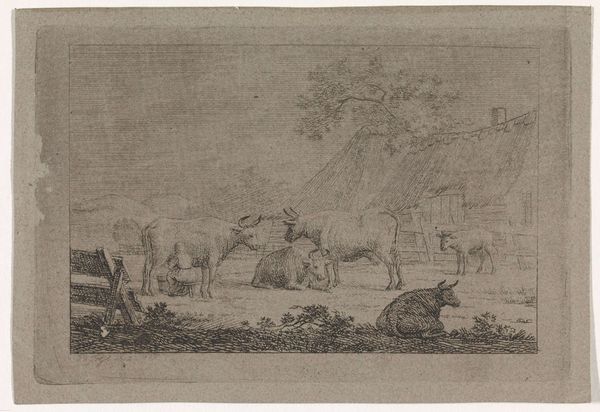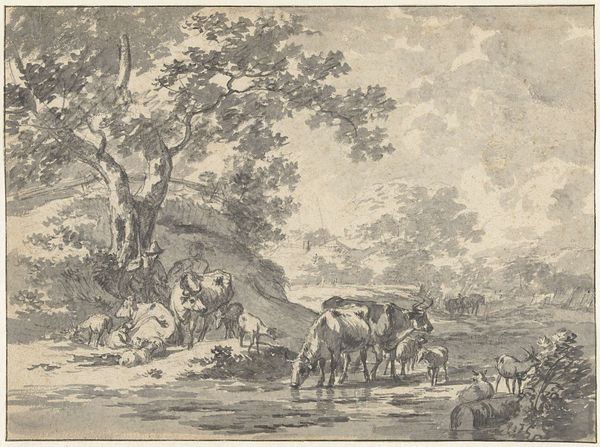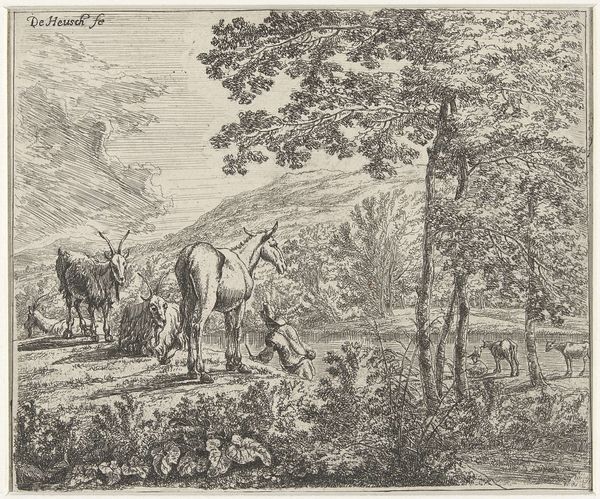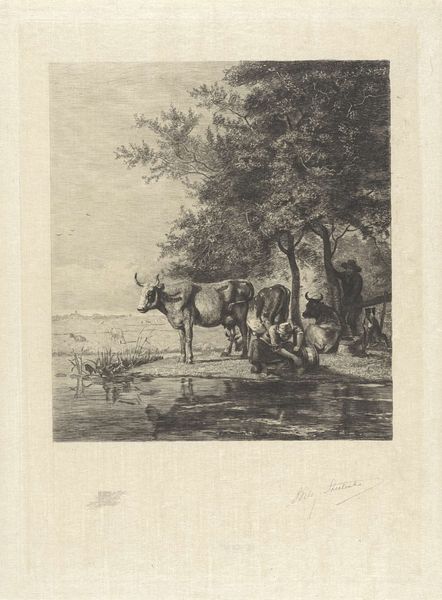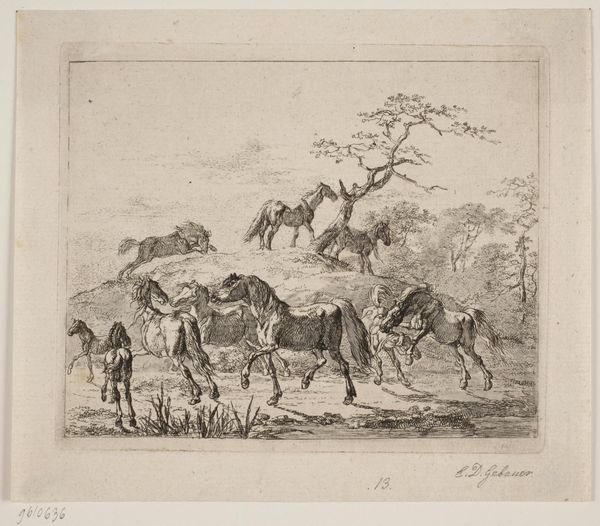
drawing, print, etching
#
drawing
# print
#
etching
#
landscape
#
figuration
#
romanticism
#
genre-painting
Dimensions: height 134 mm, width 186 mm
Copyright: Rijks Museum: Open Domain
Curator: This is “Landscape with Donkeys and Travelers,” an etching attributed to Otto Baron Howen, dating from somewhere between 1784 and 1848. Editor: Hmm, my initial response is... undergrowth. An interesting use of varied etching techniques to depict a fairly commonplace Romantic landscape. The light seems captured mainly by its absence. Curator: Absence? Interesting. For me, it is the labor inherent in creating these marks, these lines becoming a pathway, trees, beasts, and humans that fascinates. Howen wasn’t simply depicting a scene; he was actively constructing a vision through the careful application of ink to plate. Editor: But isn’t that active construction at the heart of representation itself? Consider the foreground tree – its jagged, broken limbs mirrored in the burdened figures. It's almost theatrical; a carefully staged melancholic scene. The very fine lines and dense shading create texture. Curator: A stage crafted through specific actions, the biting of acid into metal, the wiping of the plate, the pressing of paper to surface. Think about the materials involved – the copper, the acid, the paper. And the social context: who was Howen creating this for, and what role did images like this play in constructing ideas about landscape and travel? The dog and travelers show movement on what could be the start of an adventure, all made possible by laborers unknown to us. Editor: All those elements support the reading of the scene—the dark clothing of the human form furthest along the path contributes to a general solemn feeling and, coupled with the heavy laden donkeys and dense tree on the left, creates a slightly claustrophobic viewing experience despite being a landscape. I am taken with how a single color can be dynamic using tonal variance in what could have been another boring landscape composition! Curator: Exactly! It’s in understanding that labor, material conditions, and distribution network that we begin to truly appreciate the cultural value, I mean impact of such an image during that period. Editor: Perhaps, but by focusing on the elements of composition—line, form, the clever use of negative space—we start to uncover its aesthetic significance. This image speaks in a quiet, controlled voice of longing and the burden of movement. Curator: A controlled voice shaped by the physical limitations and creative possibilities inherent to the medium itself. It's fascinating how those constraints actually drove innovation, wouldn't you agree? Editor: Ultimately, the artist invites the viewer into a detailed microcosm through an achromatic scale to feel and be still within this space in nature. Curator: Yes, understanding that history gives another layer of understanding.
Comments
No comments
Be the first to comment and join the conversation on the ultimate creative platform.
